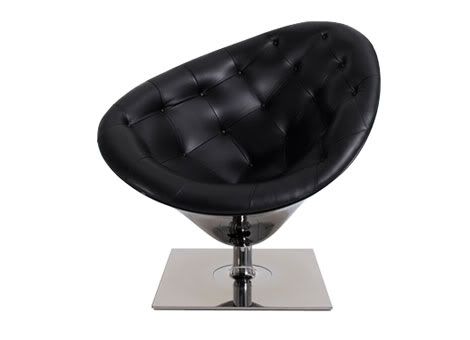One piece of furniture I am interested in knowing more about, as far as ergonomics goes, is the swivel chair.

I fell in love with one when one of my best friends decided to place one in her bedroom. It was in a sense, my chair. And I did not think about it at the time of sitting in it, but it successfully possesses all of the facets that make up ergonomics.
Safety. The shape of the chair is very accident proof. Many teacher and parents do not like when their students and children lean back in their chairs because there is possibility to fall back and break something. Swivel chairs, and in particularly the one pictured above, almost eliminate the potential of falling backward.
Comfort. Because the chair resembles a hand cupping something, it kind of gives that same affect to the person sitting in it. The comfort of the swivel chair ties into its safety. By feeling safe sitting in the chair, the users of the chair will have a greater chance of also feeling comfortable.
Ease of Use. If a chair is not one of the easiest objects to use, I do not know what is. All a person has to do is sit in it. That is, if they are an able-bodied individual. For a person that has to think about how they are going to do almost everything that most of us take for granted, such as sitting in a chair, this task may not be so easy. How is it that we forget to make things accessible to people of all abilities? In this faect, the swivel chair only reaches its highest capabilities for people that are able-bodied.
Performance (productivity). This is a tough thing to analyze for a chair. People sit in it. Can we really call that productivity? I think so. When people sit they are usually doing something else as well. Eating, watching television, working on a paper are just a few examples. The swivel chair does not allow productivity by itself, but it does work with other objects to produce. After all, what is a desk without a chair to sit in front of it with? The swivel chair serves its purpose and serves it well.
Aesthetics. This word can be defined as visually pleasing; objects that have aesthetics in mind tend to raise the question of beauty. Beauty is subjective. My best friend may not see what would be seen as beautiful to me as beautiful. In the case of the swivel chair, to me, the beauty is undeniable. The simplicity of it is what makes it beautiful.
The swivel chair achieves the ergonomics by my standards. But is the whole idea of ergonomic design really subjective?
No comments:
Post a Comment